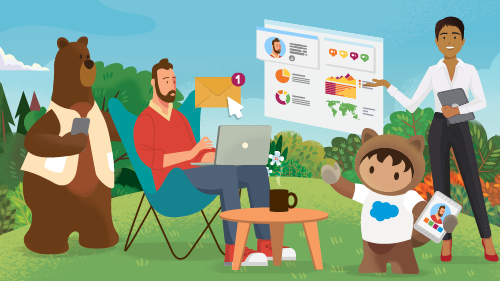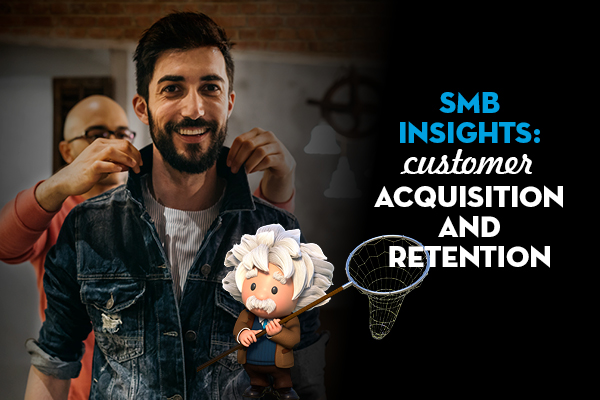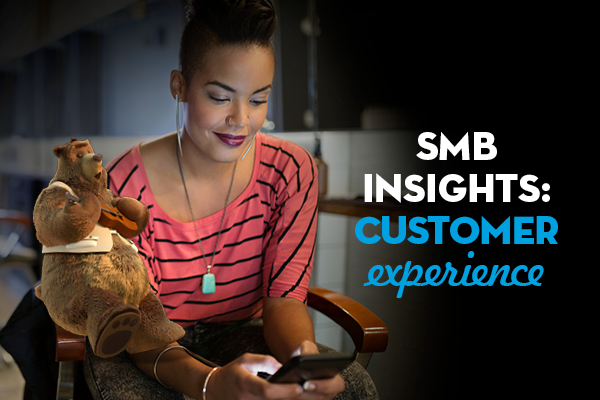The 6 Best Examples of Personalised Marketing



A look at what personalised marketing is, how it’s different from other marketing, and a list of best practice examples of personalised marketing.
Salesforce Staff
Personalised marketing is quickly becoming the norm for customers, rather than the ground-breaking outlier. The State of the Connected Customer report found that 66% of customers expect companies to understand their unique needs and expectations and 52% expect offers to always be personalised.
To help inspire your next campaign, we’ve prepared a guide to all things personalisation, as well as some industry-leading examples of it in action.
What is personalised marketing?
At its most basic level, personalised marketing is when your marketing is shaped to the person receiving it, typically by considering the customer’s interests, buying behaviours, patterns or characteristics. And the results speak for themselves, with Salesforce customers reporting a 32% increase in customer satisfaction due to personalised marketing.
It’s simple to understand if you think of it from a customer’s perspective.
Imagine a brand emailing to let you know there’s a sale on a phone that you bought two months ago. This isn’t personalised marketing — you’re getting information sent to thousands of people in the hope that some will find it relevant. This kind of marketing can easily waste resources and turn customers away from your messaging.
Now imagine a brand emailing to let you know there’s a sale on a phone just as you were thinking about buying one. Even more, the email lets you know where your closest store is, and also alerts you to other products you were thinking about purchasing. That’s personalised marketing. It’s when a brand has a good sense of who you are, what you want and when you want it. It’s immensely more effective and drives brand satisfaction.
But businesses have limited resources and time. How can you ensure a bespoke experience for every single customer at scale? It used to be a big problem, but digital solutions like customer relationship management (CRM) technology are remedying that.
With the right systems in place, you can have a detailed, real-time, 360 degree understanding of your customers — their demographic data, location, preferred channels, and more. Through automation, a single user on a marketing platform can then take advantage of that data to send timely, tailored communications to customers, supercharged by AI that simplifies the automation and offers intuitive suggestions to improve your results.
That’s personalised marketing in theory. But how does it work in practice? These six best-in-class examples give a sense of its depth and power.
6 best examples of personalised marketing in action
1. Amazon: customer focus turns forests into trees
The retail and tech giant is famous for its relentless approach to personalisation. From customising each customer’s home page so it contains the items they’re most likely to buy, to using algorithms to offer combination purchases (think of the “frequently bought together” feature), it goes above and beyond to make its marketing useful to individuals.
2. Math Pathways: turning customer data into high distinctions
Every student is different, making personalisation all the more important within education. Math Pathways has made this part of its mission, helping teachers personalise learning and improving maths outcomes for students.
To realise that mission, the organisation needs to personalise its own engagement with a variety of stakeholders. Through Sales Cloud and Pardot, the business automates data collection and segmentation. It also began using Pardot’s Engagement Studio to send tailored messages to different segments, even spinning up personalised landing pages to boost campaigns. This has nearly doubled its email open rates and yielded a 367% improvement in click-through rates.
3. Spotify: curator, conductor and confidante
More than a few people have said that the streaming service’s knowledge of their musical preferences is almost too good. Offering end-of-year rankings of your most played songs and ‘Discover Weekly’ playlists that predict artists and songs you might appreciate, the company’s algorithmic prowess makes each consumer’s experience unique.
4. OFX: helpful and personal no matter the time-zone
What should you do if your headquarters are in one place, and your customers are all over the world? That was the challenge facing OFX, a global money transfers company.
They took a unique approach to personalisation. Instead of just targeting based on the currency someone needed, they included the time zone that person was currently situated in. So instead of sending mass emails between midnight and four in the morning, their communications use a ‘follow the sun’ model of 24/7 customer support.
With the help of Salesforce Marketing Cloud, OFX is able to speak to customers all over the world like a friendly local.
5. Netflix: giving every user a personal cinema
A great example of the advantage personalisation has over legacy marketing is what video streaming service Netflix does with the ‘movie poster.’ In conventional advertising, this single image of the movie has to try and appeal to everyone, but thanks to detailed customer data and intelligent algorithms, Netflix is able to deliver specific images to specific audience members.
Take the first season of the hit show ‘Stranger Things.’ If Netflix algorithms determined someone was more a fan of fantasy than any other genre, the image they saw was dominated by an unnatural, red sky. If they liked teen dramas, they saw the show’s main teenage love interest. While this might seem complicated, it’s fundamentally a type of personalisation any company can accomplish. It all begins with data.
6. Norths Collective: personalisation isn’t just for giants
Given the above examples, you might assume that only the largest companies can pull off personalised marketing. That isn’t the case. Norths Collective is a collection of clubs and health and fitness centres serving several communities in Australia, and its personalisation is cutting edge.
Implementing Salesforce Marketing Cloud and streamlining all its various systems onto a single platform, it is able to communicate to members with reassuring intimacy. It knows who’s a young mother, who’s a more senior member, and so on. It went from ‘What’s On’ emails that tried to talk to everyone, to targeted emails that told members only what was relevant to them. They almost doubled open rates in the process. Learn about Salesforce email marketing platform solutions.
Ready to delight your own customers and prospects with personalised experiences?
Get insights on balancing customer expectations for personalisation and privacy
Download the Salesforce State of the Connected Customer report.





















